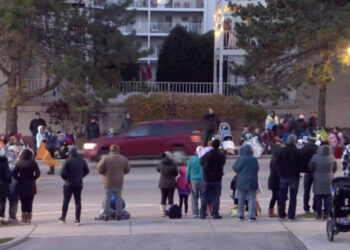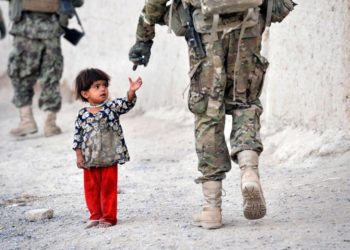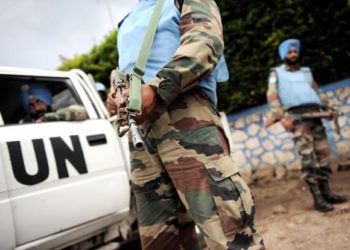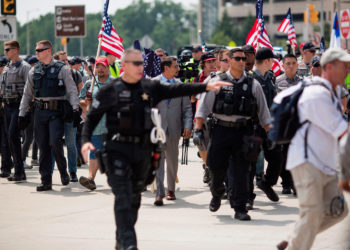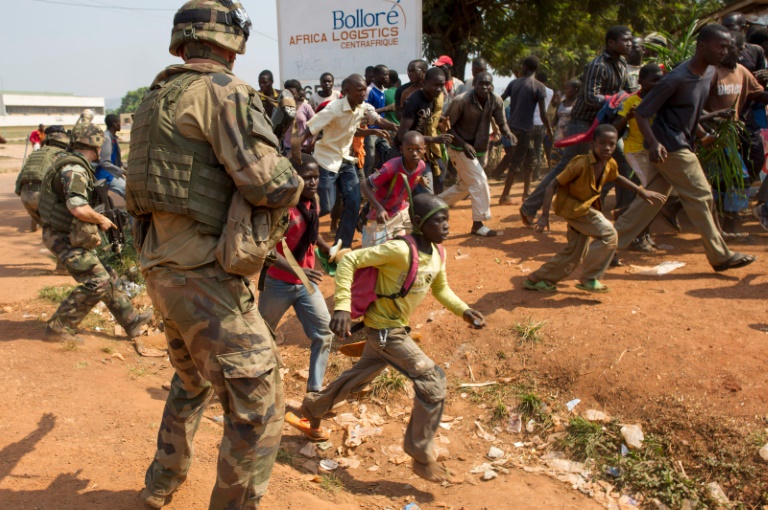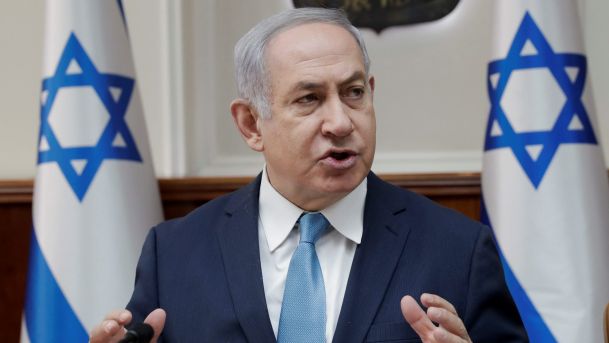In Kenya, they took his sight. In the United States, they took his father. Both men wounded and inextricably linked to acts of extremism and terrorism, use their trauma as the galvanizing force to heal their communities.
As part of the largest network of former extremists and survivors of extremism in the world, the Against Violent Extremism Network, Douglas Sidialo of Kenya and Pardeep Kaleka of the U.S. cope with the trauma of terror on a daily basis by working with vulnerable communities to put the pieces back together. In acts of terror separated by roughly a decade, they are challenging the prevailing orthodoxy around overcoming the indelible mark of pain, struggle, and hatred.
Twenty years ago, Kenyan motorbike salesman Douglas was lifted off his feet by a thunderous explosion near the U.S. embassy in the capital Nairobi. He landed amidst the debris and carnage, blind.
Less than a decade ago, Pardeep left the Sikh Temple in Oak Creek, Wisconsin, to pick up his daughter’s forgotten notebook at home. He returned to the temple, only to find it was the scene of a neo-Nazi inspired mass shooting, his father one of six victims.
This week, as the United Nations honors “Victims of Terrorism” internationally, both men, on two different continents, are still on a journey of healing and hope, which requires confronting their trauma to help others. They are journeys altered by the scourge of extremism and violence. Journeys of the duality of extremism. Journeys interrupted, but ones that are pock-marked with lessons for a world being confronted by a rising tide of exclusion, division, and the hate and violence that they breed.
Terrorism aims first and foremost to cause divisions in our societies. By supporting victims and survivors, we show we care and deny space to the terrorist narrative. What bonds us as one humanity is stronger than the power of terrorism to divide us. https://t.co/VCCNDwLvYo pic.twitter.com/qyWSN57QUg
— António Guterres (@antonioguterres) August 21, 2018
“I would have skinned them alive,” Douglas said, recounting his thinking following the bombing, “little-by-little, slowly-by-slowly, piece-by-piece so that they could feel the agony we were going through.” Revenge consumed him, and it was the realization that “bitterness only hinders healing” that propelled him forward.
“I accepted my blindness as a challenge. I decided to go on with my life with courage, resilience, and profound confidence through my rehabilitation.”
It is that resilience to trauma that is the connective tissue between Douglas and Pardeep and which highlights a global lesson for viable, constructive responses to the destruction and violence left in the wake of extremism. “I honor my trauma,” said Pardeep. “I’ve been surrounded by a community that has honored our trauma as a new immigrant population to the United States.”
Pardeep understands this trauma, not only as a survivor of an attack but also as a trauma therapist working with those marginalized as well as people in the throes of pain as they cope. “The trauma-based approach does not say what is wrong with you but instead asks what happened to you. It is my goal that we can approach life from the paradigm of trauma-informed, and begin to address root causes instead of judgment and domination.”
As a global community, we must take the time to ask “what happened to us?” The division, hatred, and extremism that has left many like Pardeep and Douglas in its wake has not enlightened our approaches to dealing with these issues. It has not propelled us collectively forward to ask hard questions about what happened, and even harder questions about ourselves.
Our responses have been vengeful and tit for tat, disregarding the toll on our collective healing. These are responses that have spurred on wars, fueled policy prescriptions that seek to isolate communities from one another, and birthed collective resentment of the other.
“When people are not holistically one, they cannot be one with one another,” said Pardeep. “Isolation, division, and separation are all illusions.”
These illusions can only be addressed through addressing the reality of trauma at its core. Realities that may be punctuated by pain in loss, but are similarly informed by the fact that, as Pardeep said, “we are all one, from the same one.”
Pardeep Kaleka and Douglas Sidialoare are members of the Against Violent Extremism Network, the largest network of former extremists and survivors of extremist events in the world. The network is managed by the Institute for Strategic Dialogue and supported by the Gen Next Foundation.
Kaleka is the eldest son of Satwant Singh Kaleka – the president of the Sikh Temple of Wisconsin, who was gunned down during the attacks of August 5, 2012. Pardeep grew up in Milwaukee and graduated from Marquette University. Being a former Milwaukee Police Officer and a current teacher in the inner city, Pardeep is no stranger to the never-ending battle against racism, bigotry, and ignorance. He firmly believes that the lamp of knowledge and truth will outshine all the darkness in the world, and does his best to profess this through his work.
After becoming blind as a result of the devastating 1998 U.S. embassy bombing in Nairobi, Sidialo has journeyed back to life. Through resilience, acceptance, courage, determination, and belief, he has become an inspiration to many around the world. Sidialo has become one of the most accomplished African blind adventurers and has never let his blindness interfere with his passion for an incredibly fulfilling, satisfying, and harmonious journey. Douglas is believed to be the first blind African to reach above the summit of mount Kilimanjaro-Uhuru Peak: 5,895 meters above sea level on September 10, 2005. From January 13 to May 12, 2007, he cycled the length of Africa from North to South, through 10 countries, on the Tour D’Afrique (Cairo to Cape Town), successfully completing the 12,000 kilometers in 95 days, and becoming the first blind person and the first African to achieve this feat.
Disclaimer: The views and opinions expressed here are those of the author and do not necessarily reflect the editorial position of The Globe Post.



